An up-to-date, searchable edition of the Idrimi inscription together with numerous annotations and bibliography. By Jacob Lauinger at Johns Hopkins University. AkkLove presents all early Akkadian literary texts related to love and sex known to date. The project is based on Wasserman, Akkadian Love Literature of the Third and Second Millennium BCE ( LAOS 4), Harrassowitz, 2016, where commentary to the texts and an introduction to the corpus are found. Offers information about the fifty most important Mesopotamian gods and goddesses and provides starting points for further research.
Directed by Nicole Brisch and funded by the UK Higher Education Academy, 2011.
ARMEP, with its multi-project search engine, enables users to simultaneously search the translations, transliterations, and catalogues of multiple Oracc projects on which ancient records of Middle Eastern polities (especially those of the first millennium BC) are edited.
The project is based at LMU Munich (Historisches Seminar, Alte Geschichte) and funded by the Alexander von Humboldt Foundation. ARMEP is managed by Jamie Novotny and Karen Radner. Through the kind permission of Kirk Grayson and with funding provided by the Alexander von Humboldt Foundation, ARRIM Digital Archive makes all nine issues of “The Annual Review of the Royal Inscriptions of Mesopotamia" (1983-1991) freely available in searchable PDF files.
This digital archive is based at LMU Munich (Historisches Seminar, Alte Geschichte) and is managed by Jamie Novotny and Karen Radner. Long after Sumerian had died out as a spoken language, bilingual (Sumerian - Akkadian) texts still played a prominent role in the scholarly culture of Babylonia and Assyria. BLMS provides editions of bilingual narrative texts, hymns, proverbs, prayers, rituals, and incantations dating to the first millennium BCE.
Project Director: Steve Tinney; Editor: Jeremiah Peterson. With the assistance of Niek Veldhuis, Jamie Novotny, Joshua Jeffers, and Ilona Zsolnay. BLMS is supported by the National Endowment for the Humanities. Editions and translations of a wide range of Mesopotamian scholarly writings, contributed by many different people and projects.
Composite transliterations of the Epic of Anzu, prepared by Amar Annus for the book The Standard Babylonian Epic of Anzu (State Archives of Assyria, Cuneiform Texts 3), Helsinki: The Neo-Assyrian Text Corpus Project, 2001. Lemmatisation by Philip Jones.
Buy the book from Eisenbrauns. Texts on extispicy (divination by the entrails of sacrificed animals). Currently contains only the Old Babylonian liver model BM 92668. The ordering of the omens was determined by Ruth Horry, the transliteration and translation made by Eleanor Robson.
Provides fully searchable manuscript transliterations of the Old Babylonian, Middle Assyrian and Neo-Assyrian versions of the Etana epic, prepared by Jamie Novotny for the book The Standard Babylonian Etana Epic (State Archives of Assyria, Cuneiform Texts 2), Helsinki: The Neo-Assyrian Text Corpus Project, 2001.
Buy the book from Eisenbrauns Editions of scholarly tablets from Huzirina, Kalhu, and Uruk for the Geography of Knowledge project, comprising editions and translations of a wide range of Mesopotamian scholarly writings.
Project directed by Eleanor Robson at the University of Cambridge and funded by the UK Arts and Humanities Research Council, 2007-12. Score and manuscript transliterations of Ludlul bēl nēmeqi, prepared by Amar Annus and Alan Lenzi for the book Ludlul Bēl Nēmeqi: The Standard Babylonian Poem of the Righteous Sufferer(State Archives of Assyria, Cuneiform Texts 7), Helsinki: The Neo-Assyrian Text Corpus Project, 2010.
Buy the book from Eisenbrauns. Third-century BC building inscriptions, from Borsippa and Uruk. Edition of the Antiochus (Borsippa) Cylinder by Kathryn Stevens; edition of the Anu-uballiṭs' inscriptions from Uruk by Eleanor Robson.
Editions and translations of texts for the UCL Undergraduate Special Subject in History, Temple Life in Assyria and Babylonia (HIST3109), academic year 2017-18. Compiled by Eleanor Robson at UCL. Provides fully searchable, annotated editions of text commentaries written by Assyrian and Babylonian scholars between the eighth and second centuries BCE. The texts commented on include literary, magical, divinatory, medical, legal, and lexical works.
Project Director: Eckart Frahm; Co-Director: Enrique Jiménez; Senior Editor: Mary Frazer.
The foundational online cataloging and archiving project for the cuneiform corpus, directed by Bob Englund at UCLA. The Oracc presentation is based directly on public CDLI data which is updated nightly.
Editions of Sumerian Kassite texts: Royal Inscriptions, Literary, and Lexical texts.
CMAwRo presents online critical editions of Mesopotamian rituals and incantations against witchcraft.
The DFG-funded research project "Corpus babylonischer Rituale und Beschwörungen gegen Schadenzauber: Edition, lexikalische Erschließung, historische und literarische Analyse" is directed by Daniel Schwemer (University of Würzburg).
CMAwRo presents online critical editions of Mesopotamian rituals and incantations against witchcraft. The text editions and translations are derived from the Corpus of Mesopotamian Anti-witchcraft Rituals (CMAwR; vol. 1, Brill: 2011).
The DFG-funded research project "Corpus babylonischer Rituale und Beschwörungen gegen Schadenzauber: Edition, lexikalische Erschließung, historische und literarische Analyse" is directed by Daniel Schwemer (University of Würzburg).
Data contributed to Oracc for reuse by others, normally under the CC BY-SA license. Contributed by Shlomo Izre'el, the Amarna corpus comprises transliterations of the 380 cuneiform tablets found at Tell el-Amarna (ancient Akhetaten) in Egypt. It contains diplomatic correspondence and Akkadian scholarly works from the mid-14th century BC.
W. G. Lambert (1926-2011) was an Assyriologist who spent much of his research time transliterating and copying cuneiform tablets in museums, especially the British Museum. His Nachlass included eight notebooks filled with handwritten transliterations of Babylonian and Assyrian texts. The notebooks contain more than five thousand transliterations, spread over nearly fifteen hundred pages. They are an astonishing record of sustained first-hand engagement with cuneiform tablets.
Cuneiform texts and onomastic data pertaining to Israelites, Judeans, and related population groups during the Neo-Assyrian, Neo- and Late Babylonian, and Achaemenid Periods (744-330 BCE).
Project directed by Ran Zadok and Yoram Cohen, and funded by the "Ancient Israel" (New Horizons) Research Program of Tel Aviv University. Editions and translations of lexical texts (word lists and sign lists) from all periods of cuneiform writing
Project directed by Niek Veldhuis at UC Berkeley and supported by the National Endowment for the Humanities. Editions and translation of the unilingual and bilingual lexical texts from Ebla (ca. 2300 BCE). The editions were prepared by Marco Bonechi (Rome) and transformed for publication in DCCLT by Niek Veldhuis.
Nineveh provides editions of the lexical texts in the royal tablet collections discovered in the Assyrian capital. The project is supported by the NEH and was carried out in cooperation with the British Museum. Editions and translations of all cuneiform sign lists from the middle of the third millennium B.C.E. until the end of cuneiform culture. The project is supported by the NEH.
Project directed by Niek Veldhuis. Editions by Emmanuelle Salgues, C. Jay Crisostomo, and John Carnahan. Catalogue of around a thousand published cuneiform mathematical tablets, with several hundred transliterations and translations.
Project run by Eleanor Robson at the University of Cambridge.
An annotated, grammatically and morphologically analyzed, transliterated, trilingual (Sumerian-English-Hungarian), parallel corpus of all Sumerian royal inscriptions.
Directed by Gábor Zólyomi at Eötvos Loránd University, Budapest and funded by the Hungarian Scientific Research Fund (OTKA). This project provides editions and translations for cuneiform technological recipes. The texts include Assyrian and Babylonian tablets that provide instructions for producing glass that imitates precious stones and procedures for processing perfumed oils. Directed by Eduardo A. Escobar at UC Berkeley
Cuneiform texts, iconography and onomastic data from Hellenistic Babylonia, primarily from Uruk. HBTIN texts form the demonstrator corpus of the Berkeley Prosopography Service (BPS).
Directed by Laurie Pearce at UC Berkeley. Over 70,000 references to the Sumerian secondary literature which also indexes all of the transliterations of word writings in ePSD.
This project illuminates how issues of law and gender were practiced in the ancient Near East, utilizing a digital corpus of legal and non-legal texts as its database. LaOCOST is directed by Ilan Peled.
Edition of the corpus of 1st-millennium-BCE texts from Assyria and Babylonia with rituals and verbal ceremonies involving Marduk, Zarpanitu and Ištar of Babylon. By Rocío Da Riva (Universitat de Barcelona) and Nathan Wasserman (The Hebrew University of Jerusalem).
Photo: Clay plaque (87.160.79) depicting a goddess lying on a wedding bed, probably Ištar. © The Israel Museum, Jerusalem.
A portal to all things related to the ancient Assyrian city of Nimrud (Kalhu/Calah), on Oracc and beyond. Explores how scientific and historical knowledge is made from archaeological objects.
Directed by Eleanor Robson at the University of Cambridge and funded by the UK Arts and Humanities Research Council. Edition of the Corpus of Old Babylonian Model Contracts by Gabriella Spada.
A catalogue and corpus of Old Babylonian tabular accounts by Eleanor Robson at University College London. Additions and corrections welcome.
Provides a global registry of sign names, variants and readings for use by Oracc.
Managed by Niek Veldhuis at UC Berkeley.
OIMEA, with its multi-project search engine, enables users to simultaneously search the translations, transliterations, and catalogues of multiple Oracc projects on which official inscriptions are edited.
The project is based at LMU Munich (Historisches Seminar, Alte Geschichte) and funded by the Alexander von Humboldt Foundation. OIMEA is managed by Jamie Novotny and Karen Radner. Provides a collection of additions and corrections to the printed fascicles of The Prosopography of the Neo-Assyrian Empire. A separate section is devoted to new information about Neo-Assyrian eponym officials. Compiled by Heather D. Baker at the University of Toronto.
Provides a global registry of compositions rather than objects, supporting the creation of scores on Oracc.
Managed by Eleanor Robson at the University of Cambridge.
This project intends to present annotated editions of the entire corpus of Assyrian royal inscriptions, texts that were published in RIMA 1-3 and RINAP 1 and 3-4. This rich, open-access corpus has been made available through the kind permission of Kirk Grayson and Grant Frame and with funding provided by the Alexander von Humboldt Foundation.
RIAo is based at LMU Munich (Historisches Seminar, Alte Geschichte) and is managed by Jamie Novotny and Karen Radner. Kirk Grayson, Nathan Morello, and Jamie Novotny are the primary content contributors. This project intends to present annotated editions of the entire corpus of Babylonian royal inscriptions from the Second Dynasty of Isin to the Neo-Babylonian Dynasty (1157-539 BC). This rich, open-access corpus has been made available through the kind permission of Rocío Da Riva and Grant Frame and with funding provided by the Alexander von Humboldt Foundation.
RIBo is based at LMU Munich (Historisches Seminar, Alte Geschichte) and is managed by Jamie Novotny and Karen Radner. Alexa Bartelmus, Rocío Da Riva, Grant Frame, and Jamie Novotny are the primary content contributors. This sub-project presently includes score transliterations of the official inscriptions of Nabopolassar and Neriglissar. The ‘Babylon 7 Scores’ project will also include the scores of the royal inscriptions of Nebuchadnezzar II and Nabonidus.
Jamie Novotny adapted the scores contributed by Rocío Da Riva, which she had published in her The Inscriptions of Nabopolassar, Amel-Marduk and Neriglissar (SANER 3).
This sub-project includes an edition of the Borsippa Inscription of Antiochus I Soter (281-261 BC).
Kathryn Stevens contributed the lemmatized edition; Jamie Novotny made minor stylistic changes to the edition and lemmatization.
This sub-project includes editions of the official inscriptions of the Second Dynasty of Isin (ca. 1157-1026 BC), texts published in Frame, RIMB 2 pp. 5-69.
Grant Frame contributed the transliterations and translations and Alexa Bartelmus updated and lemmatized the editions.
This sub-project includes editions of the official inscriptions of the Second Dynasty of the Sealand (ca. 1025-1005 BC), texts published in Frame, RIMB 2 pp. 70-77.
Grant Frame contributed the transliterations and translations and Alexa Bartelmus updated and lemmatized the editions.
This sub-project includes editions of the official inscriptions of the Bazi Dynasty (ca. 1004-985 BC), texts published in Frame, RIMB 2 pp. 78-86.
Grant Frame contributed the transliterations and translations and Alexa Bartelmus updated and lemmatized the editions.
This sub-project includes editions of the official inscriptions of the Elamite Dynasty (ca. 984-979 BC), texts published in Frame, RIMB 2 pp. 87-89.
Grant Frame contributed the transliterations and translations and Alexa Bartelmus updated and lemmatized the editions.
This sub-project includes editions of the official inscriptions of the the Period of the Uncertain Dynasties "Uncertain Dynasties" (978-626 BC), texts published in Frame, RIMB 2 pp. 5-69 and Leichty, RINAP 4.
Grant Frame and Erle Leichty contributed the transliterations and translations and Alexa Bartelmus and Jamie Novotny updated and lemmatized the editions.
This sub-project presently includes editions of some of the official inscriptions of the Neo-Babylonian Dynasty (625-539 BC), texts of Nabopolassar, Amēl-Marduk, and Neriglissar published by Da Riva. The ‘Babylon 7’ project will also include the inscriptions of Nebuchadnezzar II and Nabonidus.
Rocío Da Riva contributed the transliterations; Jamie Novotny adapted the editions, wrote a few of the content pages, and lemmatized the inscriptions; and Alexa Bartelmus prepared most of the informational pages.
This sub-project presently includes editions of three of Akkadian inscriptions of the Persian ruler Cyrus II (559-530 BC). The ‘Babylon 8’ project will eventually include other Akkadian, Elamite, and Old Persian inscriptions of Cyrus II and his successors.
Alexa Bartelmus and Jamie Novotny adapted the editions from I. Finkel, The Cyrus Cylinder. The King of Persia's Proclamation from Ancient Babylon and H. Schaudig, Die Inschriften Nabonids von Babylon und Kyros' des Großen.
This sub-project presently includes object transliterations of the inscriptions of Nabopolassar, Amēl-Marduk, and Neriglissar. The ‘Sources’ project intends to include the transliterations of all of the objects inscribed with inscriptions from the Second Dynasty of Isin to the Neo-Babylonian Dynasty (1157-539 BC).
Rīm-Anum, king of Uruk (ca. 1741–1739 BC) revolted against Samsuiluna of Babylon, son of Hammurapi, and enjoyed a short-lived independence. The archive edited in this project derives from the house of prisoners (bīt asiri) that kept the prisoners of war. The editions and translations were prepared by Andrea Seri and accompanies her book "The House of Prisoners" (2013).
Buy the bookfrom Harrassowitz. Presents fully searchable, annotated editions of the royal inscriptions of Neo-Assyrian kings Tiglath-pileser III (744-727 BC), Shalmaneser V (726-722 BC), Sargon II (721-705 BC), Sennacherib (704-681 BC), and Esarhaddon (680-669 BC).
Directed by Grant Frame at the University of Pennsylvania and funded by the National Endowment for the Humanities. The official inscriptions of Tiglath-pileser III (744-727 BC) and Shalmaneser V (726-722 BC), kings of Assyria, edited by Hayim Tadmor and Shigeo Yamada.
Buy the book from Eisenbrauns. The official inscriptions of Sennacherib (704-681 BC), king of Assyria, edited by A. Kirk Grayson and Jamie Novotny.
Buy Part 1 from Eisenbrauns and/or Part 2 from Eisenbrauns. The official inscriptions of Esarhaddon, king of Assyria (680-669 BC), edited by Erle Leichty.
Buy the book from Eisenbrauns. The official inscriptions of the Assyrian kings Ashurbanipal (668–ca. 631 BC), Aššur-etel-ilāni (ca. 631–627/626 BC), and Sîn-šarra-iškun (627/626–612 BC), edited by Jamie Novotny, Grant Frame, and Joshua Jeffers.
This sub-project of RINAP Online includes all fifty-five of the score transliterations published by the RINAP Project (2011-14).
This sub-project of RINAP Online includes transliterations of the available sources of the editions published by the RINAP Project (2011-15).
Presents Neo-Assyrian scholars' letters, queries, and reports to their kings in seventh-century Nineveh and provides resources to support their use in undergraduate teaching.
Directed by Karen Radner at University College London and Eleanor Robson at the University of Cambridge; funded by the UK Higher Education Academy, 2007-10.
The text editions from the book S. Parpola, The Correspondence of Sargon II, Part I: Letters from Assyria and the West (State Archives of Assyria, 1), 1987 (2015 reprint).
Buy the book from Eisenbrauns. The text editions from the book S. Parpola and K. Watanabe, Neo-Assyrian Treaties and Loyalty Oaths (State Archives of Assyria, 2), 1988 (reprint 2014).
Buy the book from Eisenbrauns. The text editions from the book A. Livingstone, Court Poetry and Literary Miscellanea (State Archives of Assyria, 3), 1989 (2014 reprint).
Buy the book from Eisenbrauns. The text editions from the book I. Starr, Queries to the Sungod: Divination and Politics in Sargonid Assyria (State Archives of Assyria, 4), 1990.
Buy the book from Eisenbrauns. The text editions from the book G. B. Lanfranchi and S. Parpola, The Correspondence of Sargon II, Part II: Letters from the Northern and Northeastern Provinces (State Archives of Assyria, 5), 1990 (2014 reprint).
Buy the book from Eisenbrauns. The text editions from the book T. Kwasman and S. Parpola, Legal Transactions of the Royal Court of Nineveh, Part I: Tiglath-Pileser III through Esarhaddon (State Archives of Assyria, 6), 1991.
Out of print.
The text editions from the book F. M. Fales and J. N. Postgate, Imperial Administrative Records, Part I: Palace and Temple Administration (State Archives of Assyria, 7), 1992 (2014 reprint).
Buy the book from Eisenbrauns. The text editions from the book H. Hunger, Astrological Reports to Assyrian Kings (State Archives of Assyria, 8), 1992 (2014 reprint).
Buy the book from Eisenbrauns. The text editions from the book S. Parpola, Assyrian Prophecies (State Archives of Assyria, 9), 1997.
Buy the book from Eisenbrauns. The text editions from the book S. Parpola, Letters from Assyrian and Babylonian Scholars (State Archives of Assyria, 10), 1993 (2014 reprint).
Buy the book from Eisenbrauns. The text editions from the book F. M. Fales and J. N. Postgate, Imperial Administrative Records, Part II: Provincial and Military Administration (State Archives of Assyria, 11), 1995.
Buy the book from Eisenbrauns. The text editions from the book L. Kataja and R. Whiting, Grants, Decrees and Gifts of the Neo-Assyrian Period (State Archives of Assyria, 12), 1995.
Out of print.
The text editions from the book S. W. Cole and P. Machinist, Letters from Assyrian and Babylonian Priests to Kings Esarhaddon and Assurbanipal (State Archives of Assyria, 13), 1998 (reprint 2014).
Buy the book from Eisenbrauns. The text editions from the book R. Mattila, Legal Transactions of the Royal Court of Nineveh, Part II: Assurbanipal Through Sin-šarru-iškun (State Archives of Assyria, 14), 2002.
Buy the book from Eisenbrauns. The text editions from the book A. Fuchs and S. Parpola, The Correspondence of Sargon II, Part III: Letters from Babylonia and the Eastern Provinces (State Archives of Assyria, 15), 2001.
Buy the book from Eisenbrauns. The text editions from the book M. Luukko and G. Van Buylaere, The Political Correspondence of Esarhaddon (State Archives of Assyria, 16), 2002.
Buy the book from Eisenbrauns. The text editions from the book M. Dietrich, The Neo-Babylonian Correspondence of Sargon and Sennacherib (State Archives of Assyria, 17), 2003.
Buy the book from Eisenbrauns. The text editions from the book F. S. Reynolds, The Babylonian Correspondence of Esarhaddon and Letters to Assurbanipal and Sin-šarru-iškun from Northern and Central Babylonia (State Archives of Assyria, 18), 2003.
Buy the book from Eisenbrauns. The text editions from the book Mikko Luukko, The Correspondence of Tiglath-Pileser III and Sargon II from Calah/Nimrud (State Archives of Assyria, 19), 2013.
Buy the book from Eisenbrauns. The text editions from the book Simo Parpola, Assyrian Royal Rituals and Cultic Texts (State Archives of Assyria, 20), 2017.
Buy the book from Eisenbrauns. The text editions and composite translation from the book A. Millard, The Eponyms of the Assyrian Empire, 910-612 BC (State Archives of Assyria Studies 2), 1994 (2014 reprint).
Buy the book from Eisenbrauns. AkkLove presents all early Akkadian literary texts related to love and sex known to date. The project is based on Wasserman, Akkadian Love Literature of the Third and Second Millennium BCE ( LAOS 4), Harrassowitz, 2016, where commentary to the texts and an introduction to the corpus are found. This project presents annotated editions of the officially commissioned texts of the extant, first-millennium-BC inscriptions of the rulers of Suhu, texts published in Frame, RIMB 2 pp. 275-331. The open-access transliterations and translations were made available through the kind permission of Grant Frame and with funding provided by the Alexander von Humboldt Foundation.
Suhu online is based at LMU Munich (Historisches Seminar, Alte Geschichte) and is managed by Jamie Novotny and Karen Radner. Alexa Bartelmus and Grant Frame are the primary content contributors. Provides a global registry of cuneiform manuscripts, supplementary to CDLI.
Managed by Eleanor Robson at the University of Cambridge.


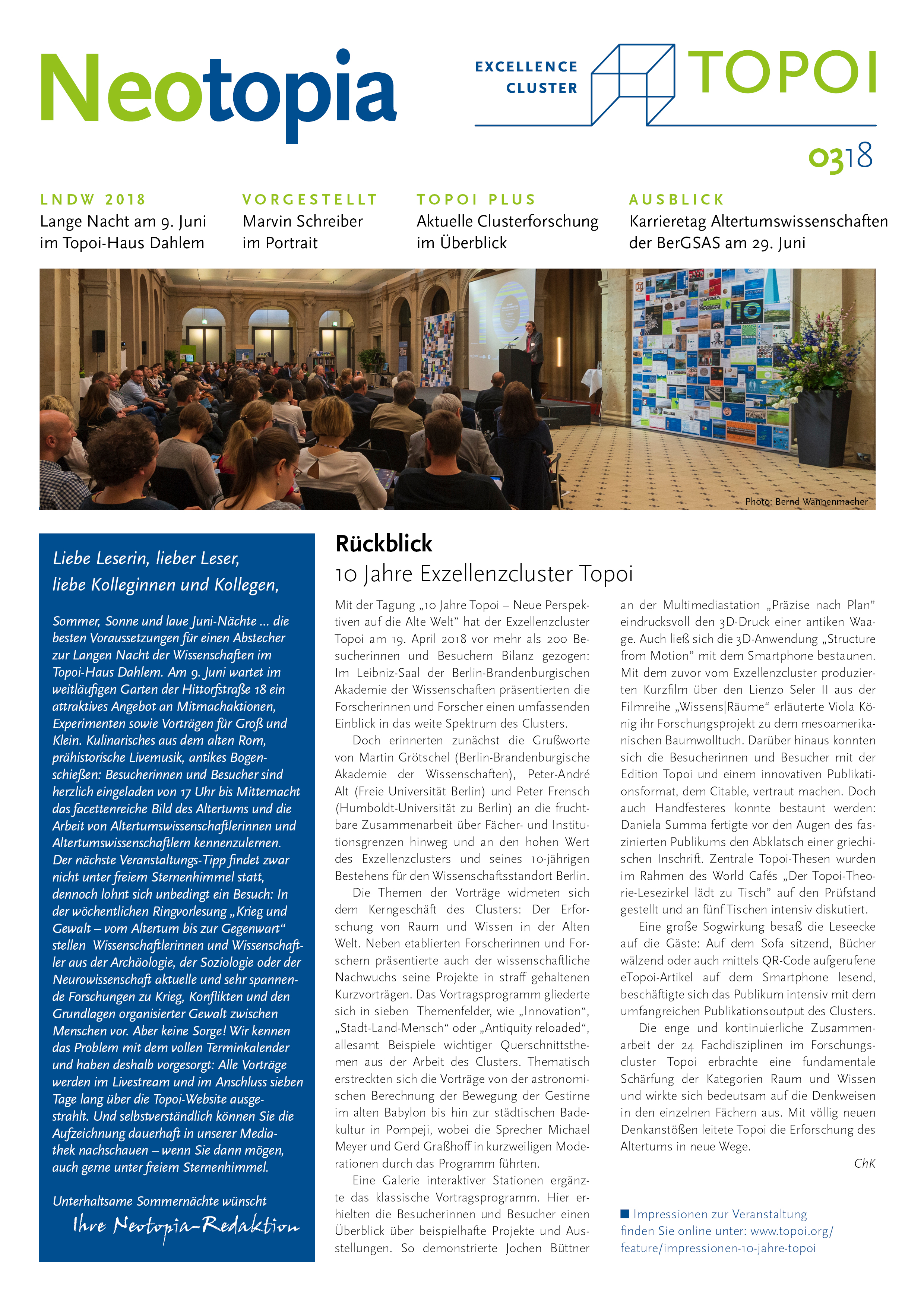
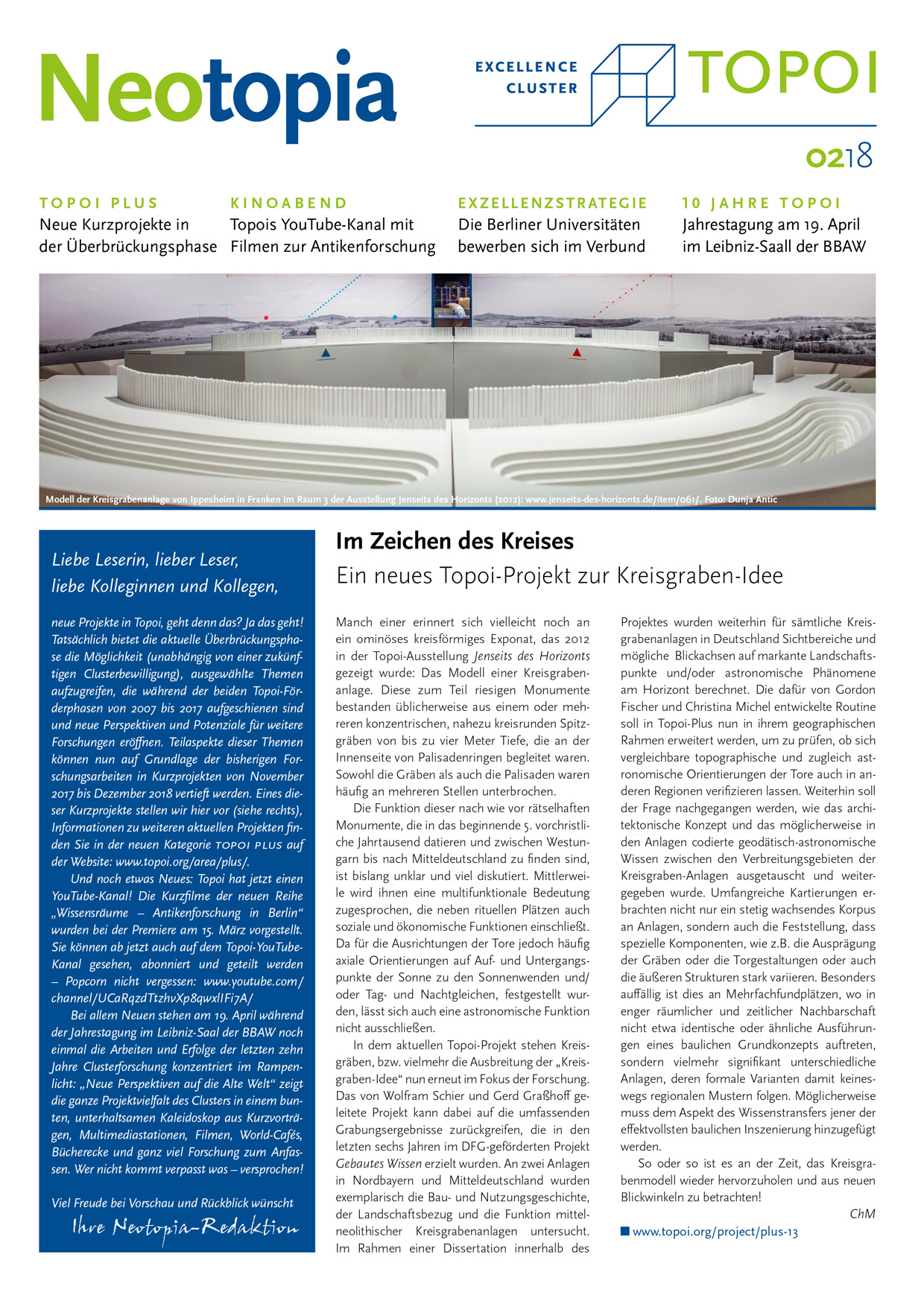
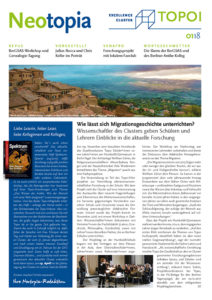
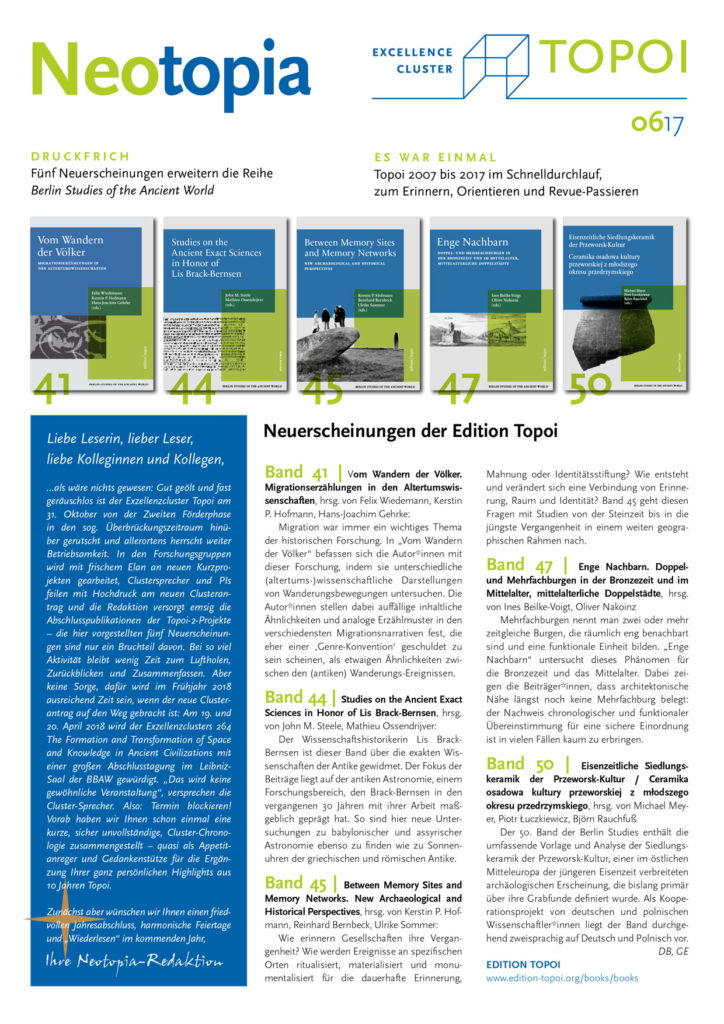
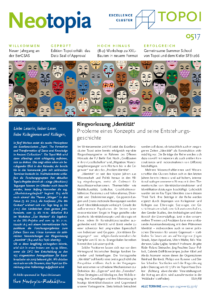
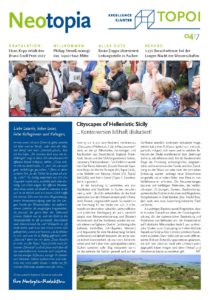
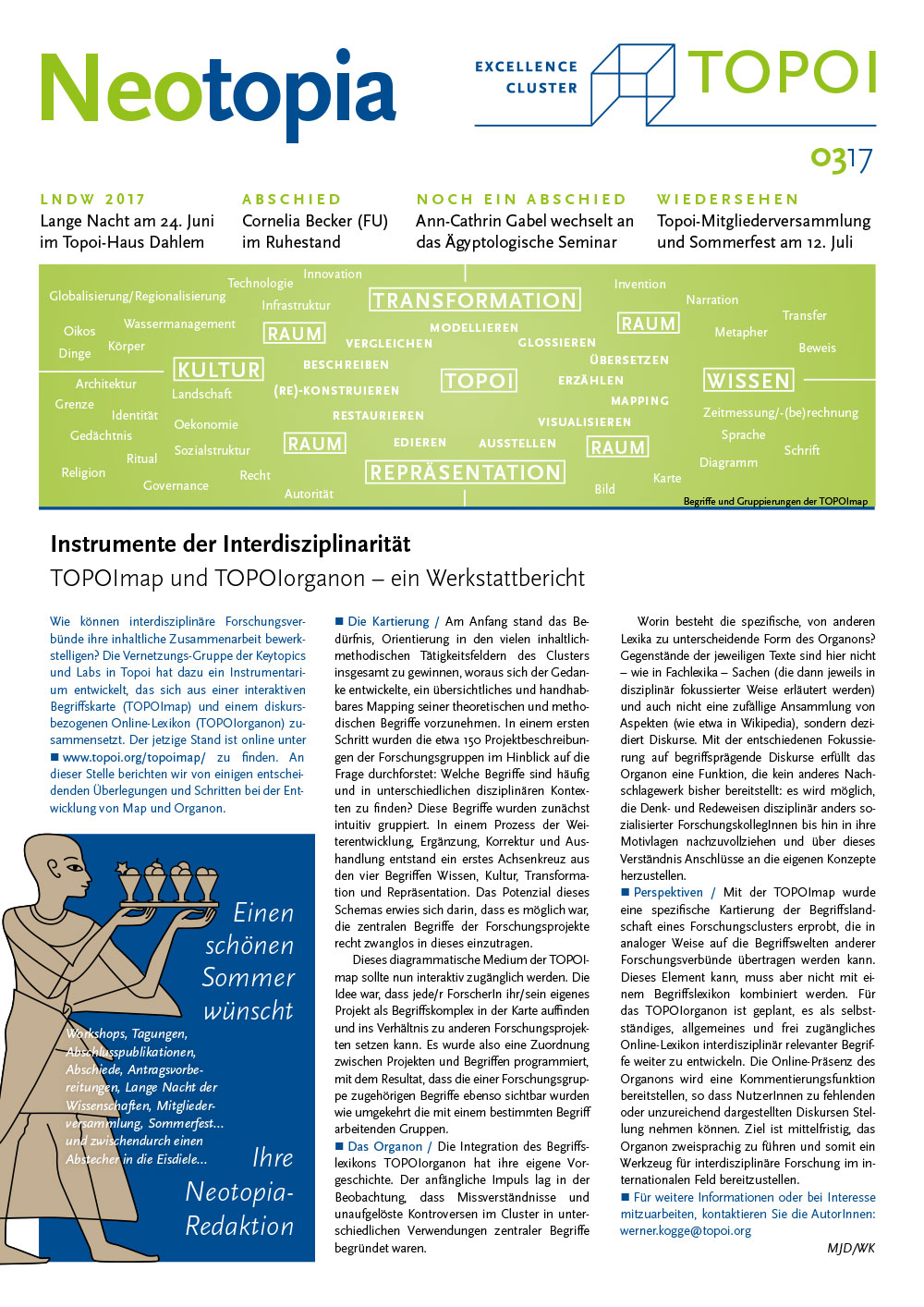
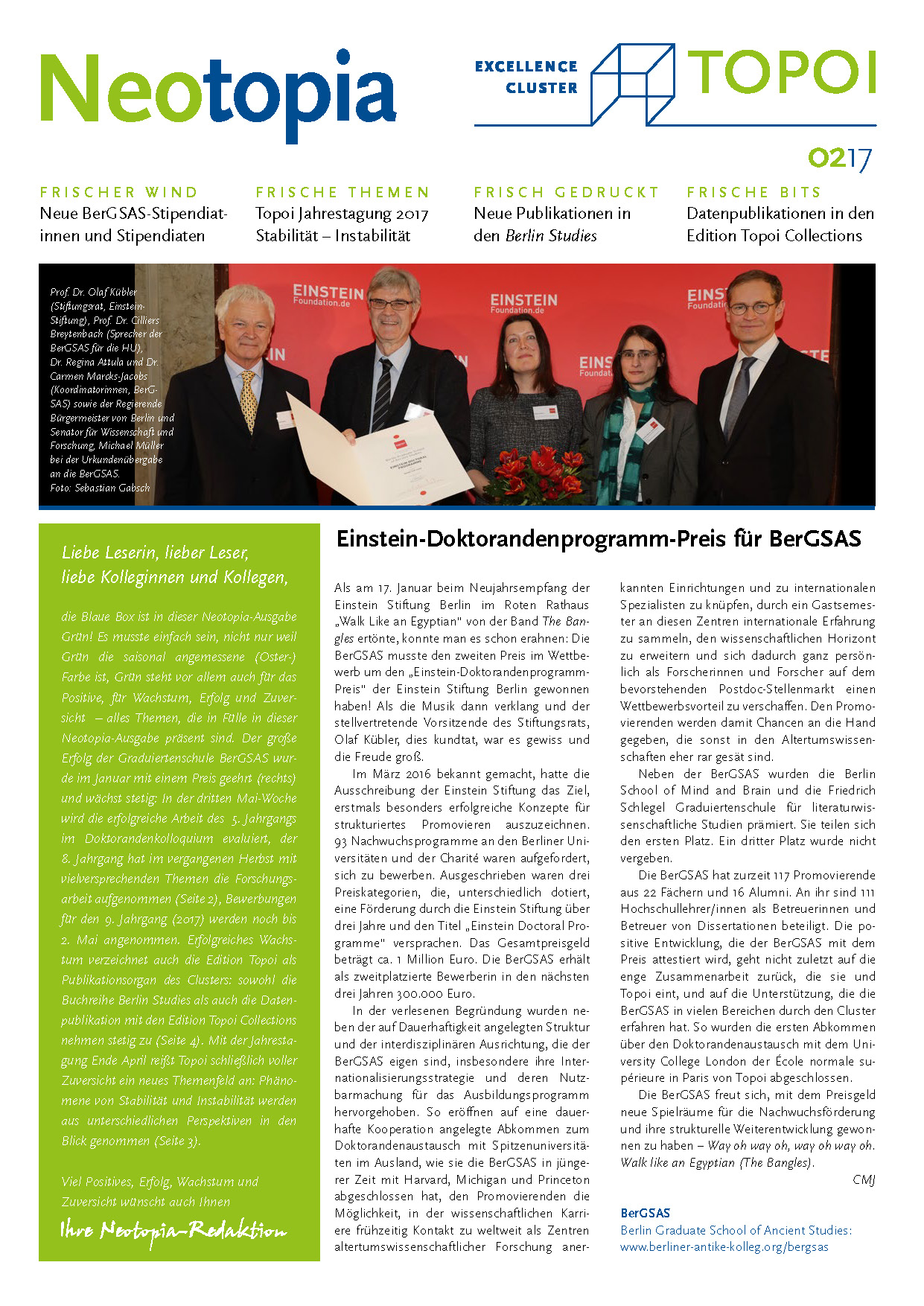
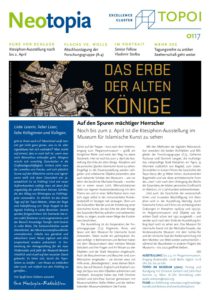
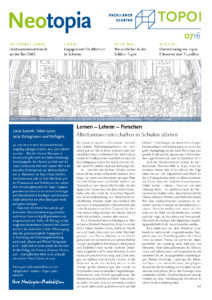
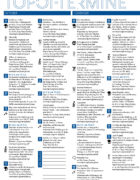
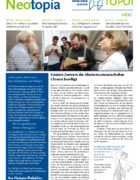
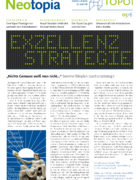
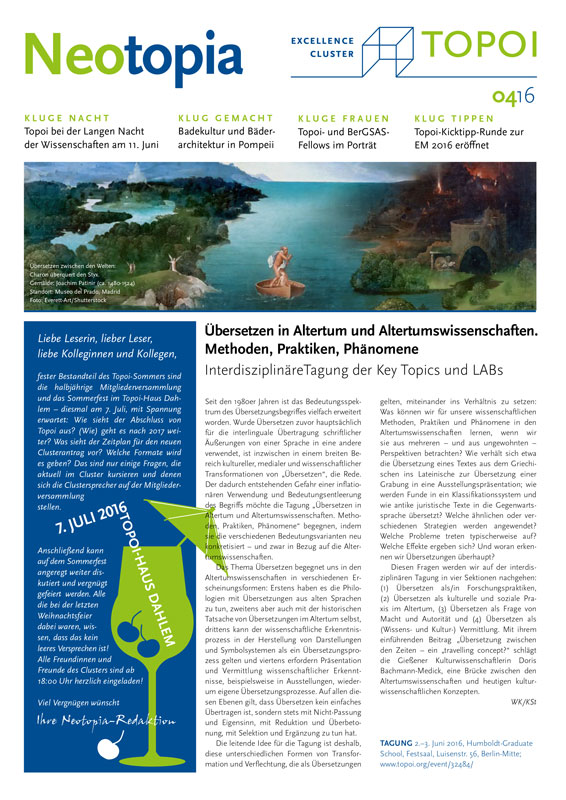
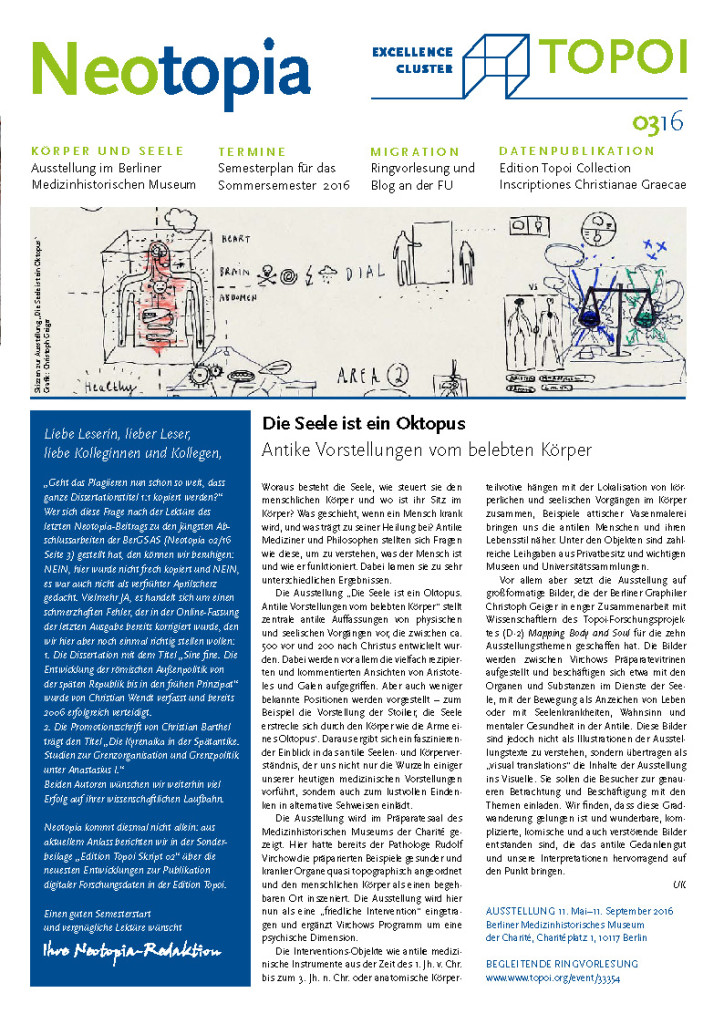
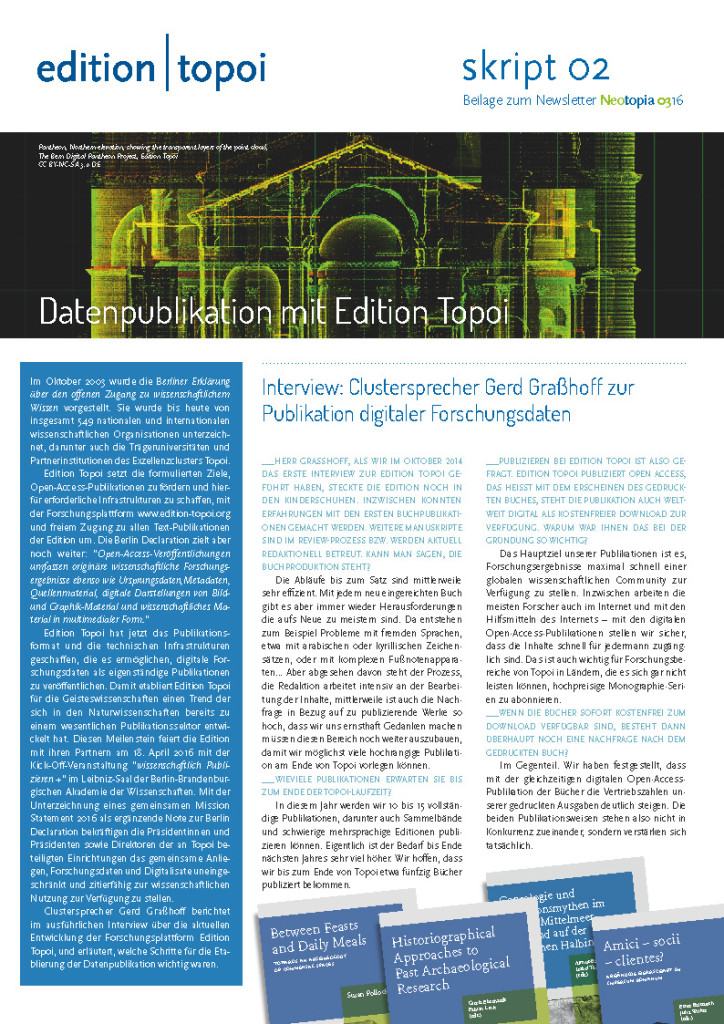
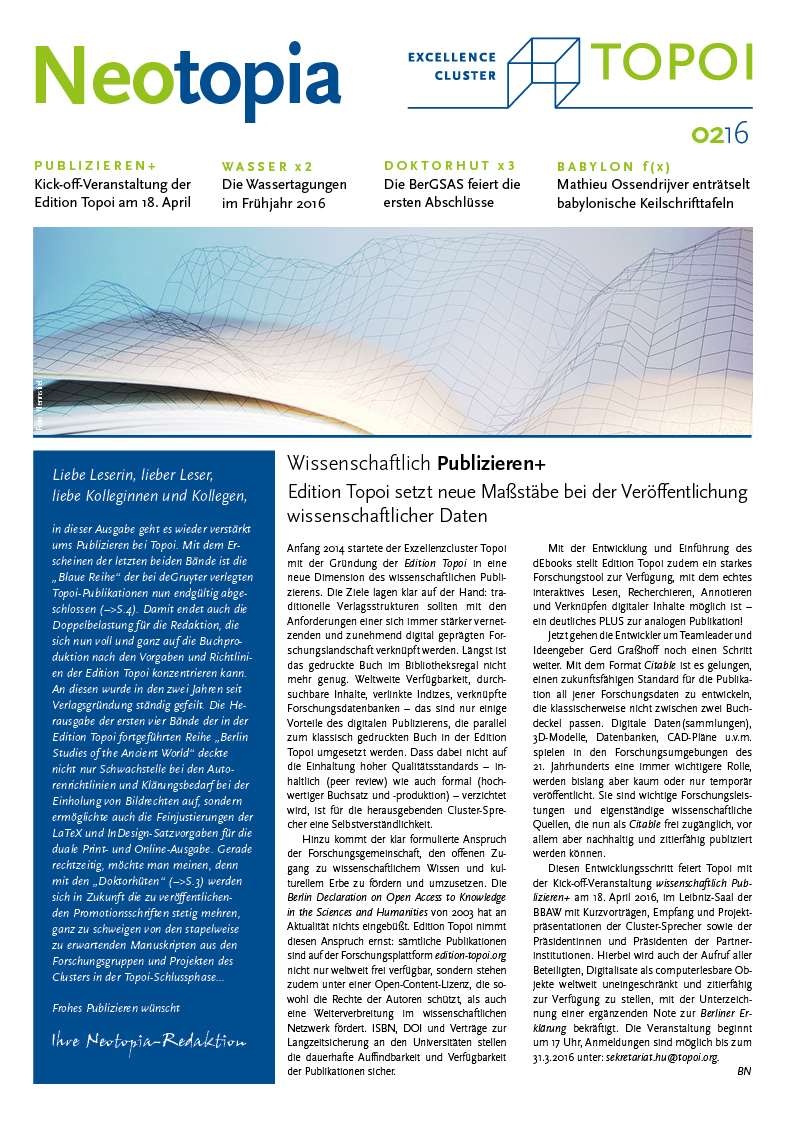
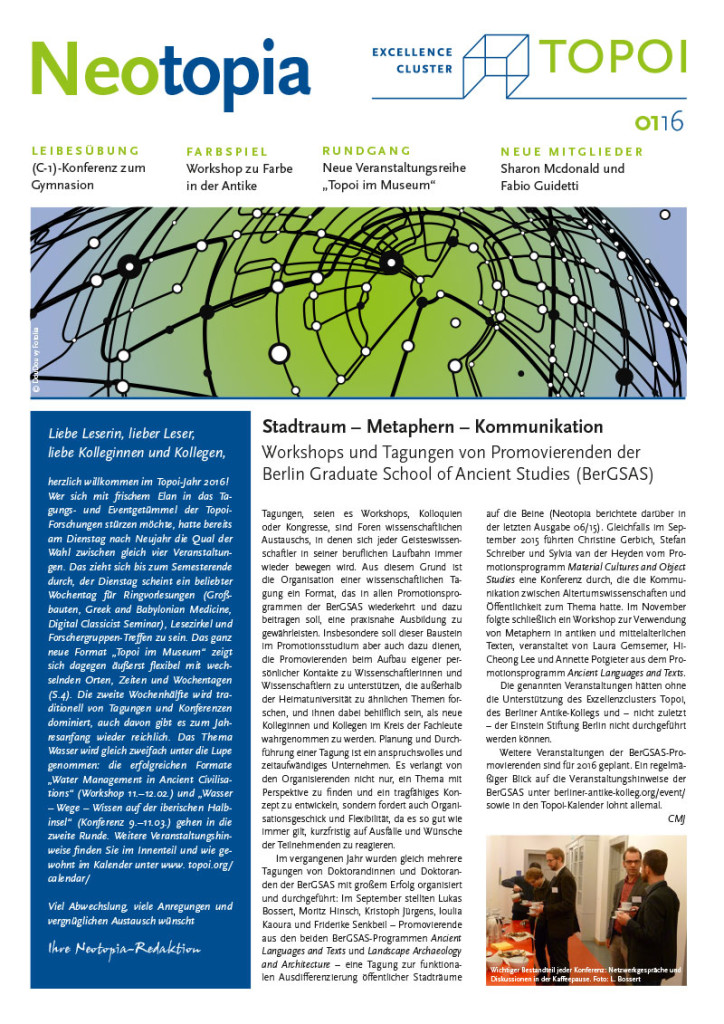
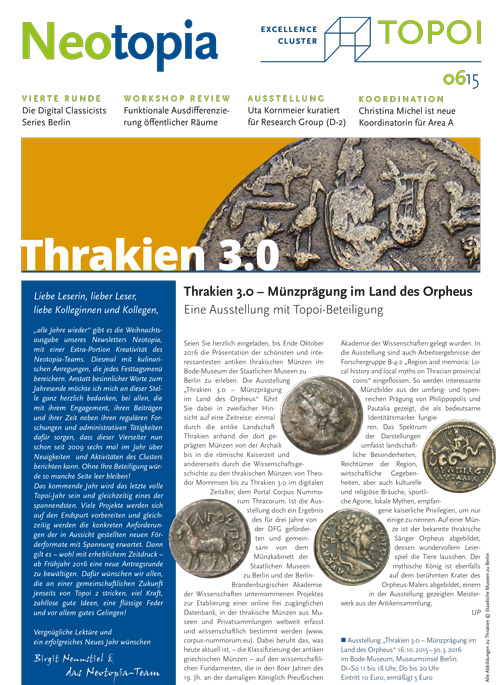
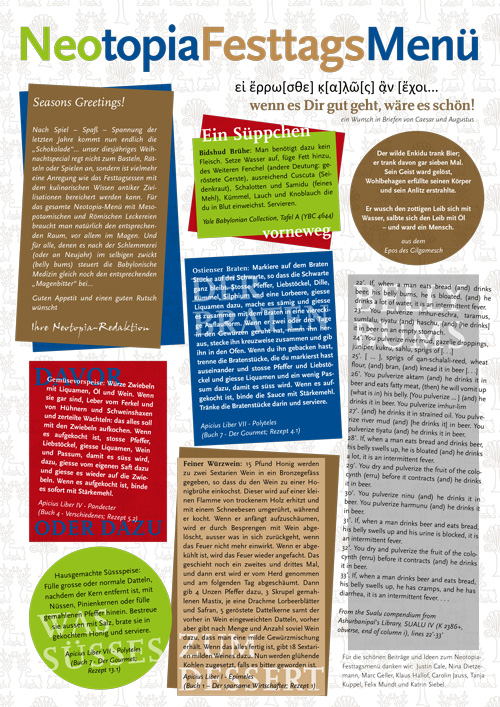
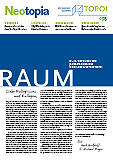
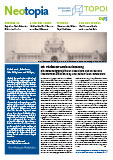
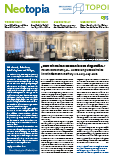
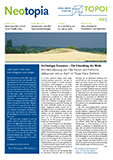
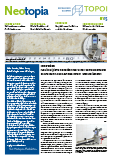
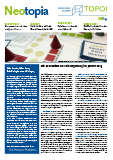
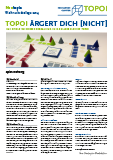
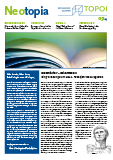
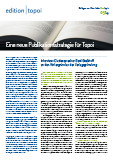
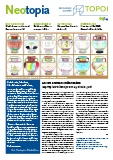
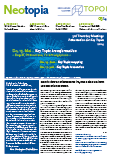
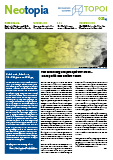
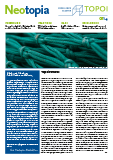
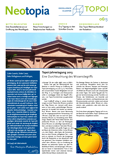
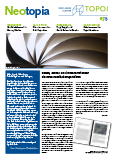
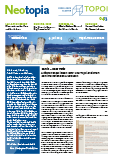
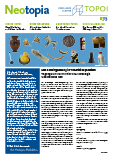
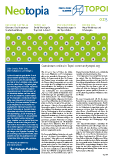
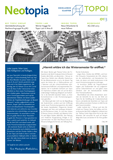
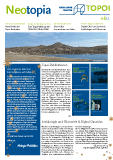
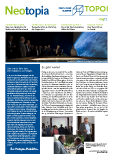
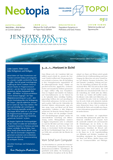
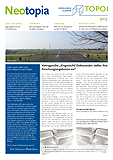
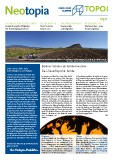
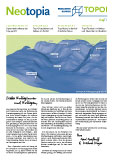
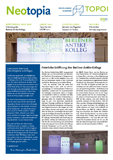
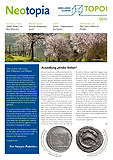
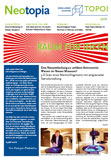
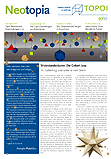
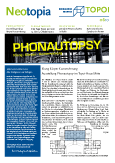
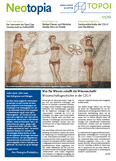
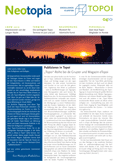
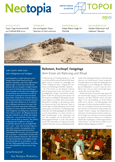
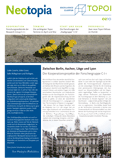
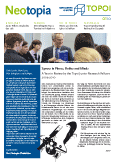
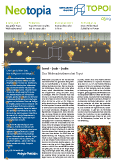
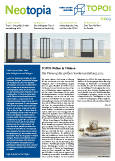
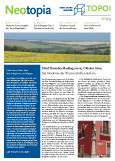
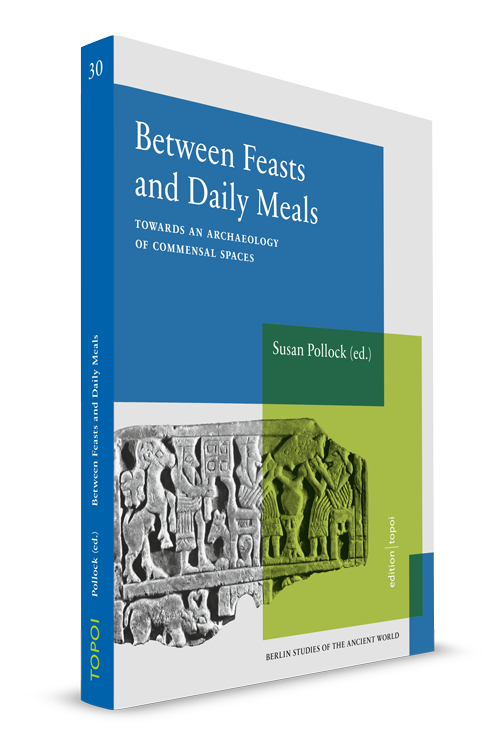

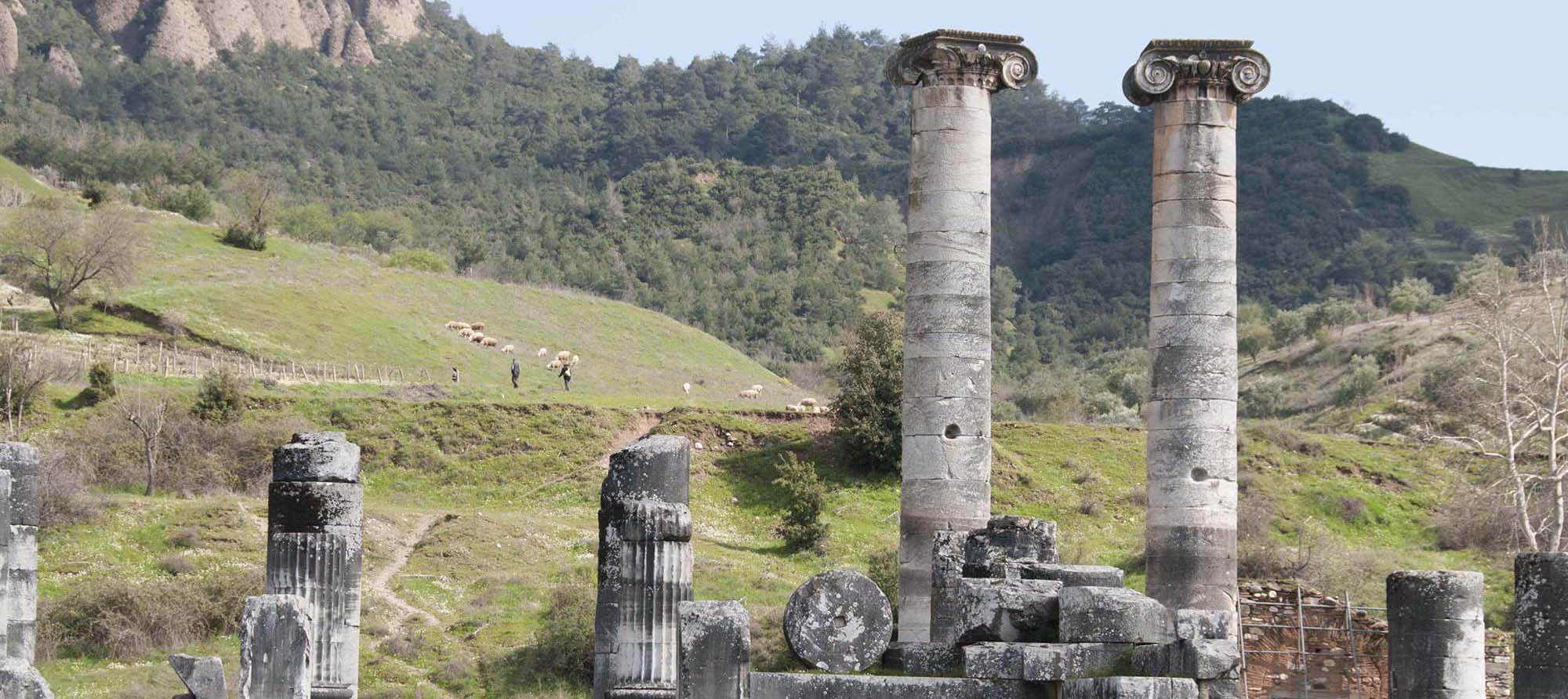



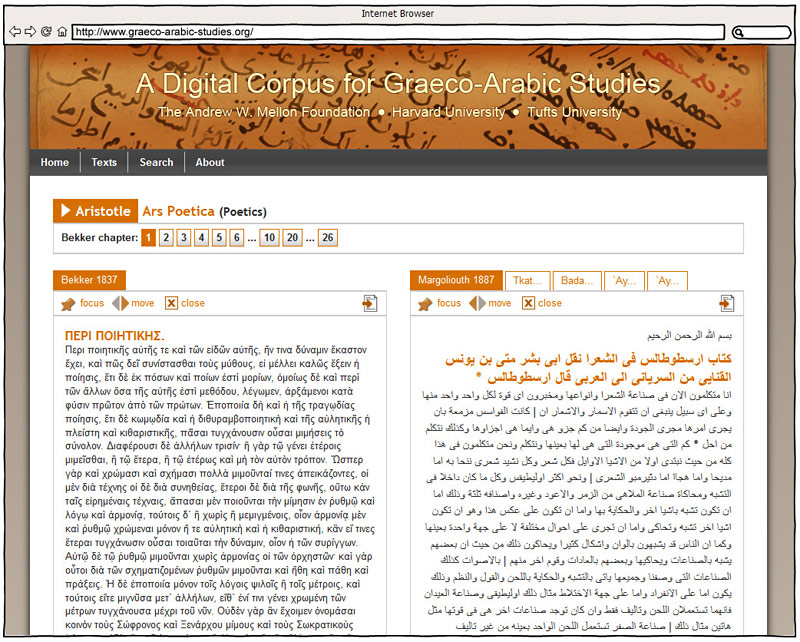












 Magnetometer survey of a Hafit monumental complex, al-Khashbah, Sultanate of Oman (poster)Taken from Proceedings of the Seminar for Arabian Studies Volume 48 2018 edited by Julian Jansen van Rensburg, Harry Munt, Tim Power, and Janet Starkey. Pages 119-124.
Magnetometer survey of a Hafit monumental complex, al-Khashbah, Sultanate of Oman (poster)Taken from Proceedings of the Seminar for Arabian Studies Volume 48 2018 edited by Julian Jansen van Rensburg, Harry Munt, Tim Power, and Janet Starkey. Pages 119-124. The development of complexity at third-millennium BC al-Khashbah, Sultanate of Oman: results of the first two seasons, 2015 and 2016Taken from Proceedings of the Seminar for Arabian Studies Volume 47 2017 edited by Julian Jansen van Rensburg, Harry Munt, and Janet Starkey. Pages 215–226.
The development of complexity at third-millennium BC al-Khashbah, Sultanate of Oman: results of the first two seasons, 2015 and 2016Taken from Proceedings of the Seminar for Arabian Studies Volume 47 2017 edited by Julian Jansen van Rensburg, Harry Munt, and Janet Starkey. Pages 215–226. The reuse of tombs in the necropolis of Bat, Sultanate of OmanTaken from Proceedings of the Seminar for Arabian Studies Volume 45 2015 edited by Orhan Elmaz. Pages 83–92.
The reuse of tombs in the necropolis of Bat, Sultanate of OmanTaken from Proceedings of the Seminar for Arabian Studies Volume 45 2015 edited by Orhan Elmaz. Pages 83–92. Umm an-Nar pottery assemblages from Bāt and al-Zībā and their functional contextsTaken from Proceedings of the Seminar for Arabian Studies Volume 46 2016 edited by Janet Starkey and Orhan Elmaz. Pages 247–262.
Umm an-Nar pottery assemblages from Bāt and al-Zībā and their functional contextsTaken from Proceedings of the Seminar for Arabian Studies Volume 46 2016 edited by Janet Starkey and Orhan Elmaz. Pages 247–262.






 Current Research in Egyptology 2017Proceedings of the Eighteenth Annual Symposium: University of Naples, “L’Orientale” 3–6 May 2017 edited by Ilaria Incordino, Stefania Mainieri, Elena D’Itria, Maria Diletta Pubblico, Francesco Michele Rega, Anna Salsano. Paperback; 203x276mm; 238 pages; illustrated throughout in colour and black & white (75 colour plates). 56 2018.
Current Research in Egyptology 2017Proceedings of the Eighteenth Annual Symposium: University of Naples, “L’Orientale” 3–6 May 2017 edited by Ilaria Incordino, Stefania Mainieri, Elena D’Itria, Maria Diletta Pubblico, Francesco Michele Rega, Anna Salsano. Paperback; 203x276mm; 238 pages; illustrated throughout in colour and black & white (75 colour plates). 56 2018.  From tentscape to landscape: a multi-scale analysis of long-term patterns of occupation in north-west QatarTaken from Proceedings of the Seminar for Arabian Studies Volume 48 2018 edited by Julian Jansen van Rensburg, Harry Munt, Tim Power, and Janet Starkey. Pages 31-45.
From tentscape to landscape: a multi-scale analysis of long-term patterns of occupation in north-west QatarTaken from Proceedings of the Seminar for Arabian Studies Volume 48 2018 edited by Julian Jansen van Rensburg, Harry Munt, Tim Power, and Janet Starkey. Pages 31-45. Gardens of Istanbul in Persian hajj traveloguesTaken from Travellers in Ottoman Lands edited by Ines Aščerić-Todd, Sabina Knees, Janet Starkey and Paul Starkey. Pages 57-68.
Gardens of Istanbul in Persian hajj traveloguesTaken from Travellers in Ottoman Lands edited by Ines Aščerić-Todd, Sabina Knees, Janet Starkey and Paul Starkey. Pages 57-68. Entangled Relations over Geographical and Gendered Space: Multi-Component Personal Ornaments at HasanluTaken from Composite Artefacts in the Ancient Near East edited by Silvana Di Paolo. Pages 51-61.
Entangled Relations over Geographical and Gendered Space: Multi-Component Personal Ornaments at HasanluTaken from Composite Artefacts in the Ancient Near East edited by Silvana Di Paolo. Pages 51-61. Visualizing cityscapes of Classical antiquity: from early modern reconstruction drawings to digital 3D modelsWith a case study from the ancient town of Koroneia in Boeotia, Greece by Chiara Piccoli. Paperback; 203x276mm; xiv+314 pages; illustrated throughout in colour and black & white (100 colour plates). 53 2018.
Visualizing cityscapes of Classical antiquity: from early modern reconstruction drawings to digital 3D modelsWith a case study from the ancient town of Koroneia in Boeotia, Greece by Chiara Piccoli. Paperback; 203x276mm; xiv+314 pages; illustrated throughout in colour and black & white (100 colour plates). 53 2018.  New Proposal for the Location of Ancient Turanu (URU tu-ra-nu)Taken from Ash-sharq: Bulletin of the Ancient Near East Vol 2 No 1 edited by Laura Battini. Pages 83-84.
New Proposal for the Location of Ancient Turanu (URU tu-ra-nu)Taken from Ash-sharq: Bulletin of the Ancient Near East Vol 2 No 1 edited by Laura Battini. Pages 83-84. Creativity versus Taboo in Late Bronze Age Central and Southeast EuropeTaken from Considering Creativity: Creativity, Knowledge and Practice in Bronze Age Europe edited by Joanna Sofaer. Pages 39-54.
Creativity versus Taboo in Late Bronze Age Central and Southeast EuropeTaken from Considering Creativity: Creativity, Knowledge and Practice in Bronze Age Europe edited by Joanna Sofaer. Pages 39-54. Creativity and KnowledgeTaken from Considering Creativity: Creativity, Knowledge and Practice in Bronze Age Europe edited by Joanna Sofaer. Pages 5-17.
Creativity and KnowledgeTaken from Considering Creativity: Creativity, Knowledge and Practice in Bronze Age Europe edited by Joanna Sofaer. Pages 5-17. Guilty or Innocent? The Buckingham vs. Bankes Libel Trial of 1826Taken from Lost and Now Found: Explorers, Diplomats and Artists in Egypt and the Near East edited by Neil Cooke and Vanessa Daubney. Pages 183-203.
Guilty or Innocent? The Buckingham vs. Bankes Libel Trial of 1826Taken from Lost and Now Found: Explorers, Diplomats and Artists in Egypt and the Near East edited by Neil Cooke and Vanessa Daubney. Pages 183-203. London’s Waterfront 1100–1666: excavations in Thames Street, London, 1974–84 by John Schofield, Lyn Blackmore and Jacqui Pearce, with Tony Dyson. Hardback; 210x297mm; xxiv+514 pages; illustrated throughout in colour and black & white (132 colour plates). English text with summaries in French and German. 422 2018.
London’s Waterfront 1100–1666: excavations in Thames Street, London, 1974–84 by John Schofield, Lyn Blackmore and Jacqui Pearce, with Tony Dyson. Hardback; 210x297mm; xxiv+514 pages; illustrated throughout in colour and black & white (132 colour plates). English text with summaries in French and German. 422 2018.  Special Place, Interesting Times: The island of Palagruža and transitional periods in Adriatic prehistory by Stašo Forenbaher with contributions by Zlatko Perhoč and Robert H. Tykot. x+194 pages; illustrated throughout in colour and black & white (60 colour plates). 421 2018.
Special Place, Interesting Times: The island of Palagruža and transitional periods in Adriatic prehistory by Stašo Forenbaher with contributions by Zlatko Perhoč and Robert H. Tykot. x+194 pages; illustrated throughout in colour and black & white (60 colour plates). 421 2018.  Gifts, Goods and Money: Comparing currency and circulation systems in past societies edited by Dirk Brandherm, Elon Heymans and Daniela Hofmann. vi+228 pages; 73 figures (30 colour plates). 416 2018.
Gifts, Goods and Money: Comparing currency and circulation systems in past societies edited by Dirk Brandherm, Elon Heymans and Daniela Hofmann. vi+228 pages; 73 figures (30 colour plates). 416 2018.  Life on the Edge: The Neolithic and Bronze Age of Iain Crawford’s Udal, North Uist edited by Beverley Ballin Smith. Hardback; xxxii+270 pages; highly illustrated in full colour throughout. 408 2018.
Life on the Edge: The Neolithic and Bronze Age of Iain Crawford’s Udal, North Uist edited by Beverley Ballin Smith. Hardback; xxxii+270 pages; highly illustrated in full colour throughout. 408 2018.  KYMISSALA: Archaeology – Education – Sustainability by Manolis I. Stefanakis. xii+192 pages; illustrated throughout in colour and black & white. Papers in English and Greek.. 52 2018.
KYMISSALA: Archaeology – Education – Sustainability by Manolis I. Stefanakis. xii+192 pages; illustrated throughout in colour and black & white. Papers in English and Greek.. 52 2018.  Colecciones, arqueólogos, instituciones y yacimientos en la España de los siglos XVIII al XX edited by Sergio España-Chamorro, Rebeca Arranz Santos, Alberto Romero Molero. xii+246 pages; illustrated throughout in color and black & white (71 colour plates). 50 2018.
Colecciones, arqueólogos, instituciones y yacimientos en la España de los siglos XVIII al XX edited by Sergio España-Chamorro, Rebeca Arranz Santos, Alberto Romero Molero. xii+246 pages; illustrated throughout in color and black & white (71 colour plates). 50 2018.  SOMA 2015: Time, Space and PeopleProceedings of the 19th Symposium on Mediterranean Archaeology edited by Murat Arslan. iv+190 pages; illustrated throughout in colour and black & white (69 colour plates). 49 2018.
SOMA 2015: Time, Space and PeopleProceedings of the 19th Symposium on Mediterranean Archaeology edited by Murat Arslan. iv+190 pages; illustrated throughout in colour and black & white (69 colour plates). 49 2018.  Who Owns the Past?Archaeological Heritage between Idealism and Destruction edited by Maja Gori (editor-in-chief). 123 pages; full colour throughout. 2 2017.
Who Owns the Past?Archaeological Heritage between Idealism and Destruction edited by Maja Gori (editor-in-chief). 123 pages; full colour throughout. 2 2017.  Le classi ceramiche della “tradizione mista” a Kos nel Tardo Bronzo IA by Salvatore Vitale. 208 pages; illustrations in colour and black & white. Italian text.. 51 2018. ISBN 9781784918859.
Le classi ceramiche della “tradizione mista” a Kos nel Tardo Bronzo IA by Salvatore Vitale. 208 pages; illustrations in colour and black & white. Italian text.. 51 2018. ISBN 9781784918859.  Problems of Chronology in Gandhāran ArtProceedings of the First International Workshop of the Gandhāra Connections Project, University of Oxford, 23rd-24th March, 2017 edited by Wannaporn Rienjang and Peter Stewart. iv+166 pages; illustrated throughout in colour and black & white (56 colour plates). 419 2018.
Problems of Chronology in Gandhāran ArtProceedings of the First International Workshop of the Gandhāra Connections Project, University of Oxford, 23rd-24th March, 2017 edited by Wannaporn Rienjang and Peter Stewart. iv+166 pages; illustrated throughout in colour and black & white (56 colour plates). 419 2018.  Marcadores gráficos y territorios megalíticos en la Cuenca interior del Tajo: Toledo, Madrid y Guadalajara by Mª Ángeles Lancharro Gutiérrez. 346 pages; illustrated throughout in colour and black & white (222 plates in colour). 46 2018.
Marcadores gráficos y territorios megalíticos en la Cuenca interior del Tajo: Toledo, Madrid y Guadalajara by Mª Ángeles Lancharro Gutiérrez. 346 pages; illustrated throughout in colour and black & white (222 plates in colour). 46 2018.  A Roman aqueduct through the Cretan highlands – securing the water supply for elevated LyttosTaken from Great Waterworks in Roman Greece edited by Georgia A. Aristodemou and Theodosios P. Tassios. Pages 147-169.
A Roman aqueduct through the Cretan highlands – securing the water supply for elevated LyttosTaken from Great Waterworks in Roman Greece edited by Georgia A. Aristodemou and Theodosios P. Tassios. Pages 147-169.




































































































